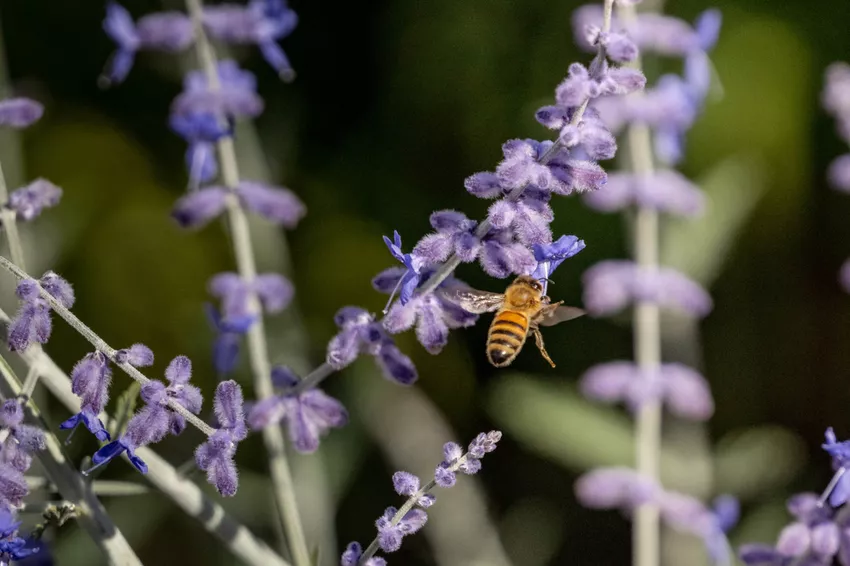Nobody will miss the fact that the blue rue has an intense scent. Everyone immediately agrees that this scent is pleasant. But there is one thing nobody can tell, no matter how close they get to her: whether this scent also harbors dangers. Is the blue rue only fragrant or also poisonous?
 The blue rue is not poisonous for us or for bees
The blue rue is not poisonous for us or for bees
Can so many bees be wrong?
The blue rue is a bee pasture. From July to August, it attracts countless bees with its spicy scent and nourishes them with its delicious nectar. The insects use this to make honey, which is so healthy for us. It just can't be that toxins are slumbering in this purple flowering plant. Can so many bees be wrong? Or maybe they don't mind toxins?
100% all clear
The blue rue is not poisonous. Not for bees, and not for us either! This applies to all varieties of this Asian steppe plant. And now that we know about it, we can enjoy it carefree for many years. Because the blue diamond is hardy and faithfully accompanies us through heat and snow.
- does not contain any toxic substances
- can be planted without hesitation
- no danger when touched, e.g. B when cutting
tips
Multiply the blue diamond from the annual cuttings. The useful insect people in the garden will be happy about it.
use of the ingredients
Siberian lavender essential oils are not only non-toxic. They are even used by humans. As a mild stimulant, for example, or as herbal tobacco.
The more sun this plant gets, the spicier its leaves and flowers become. In sunny France, it is therefore often planted as a lavender substitute.